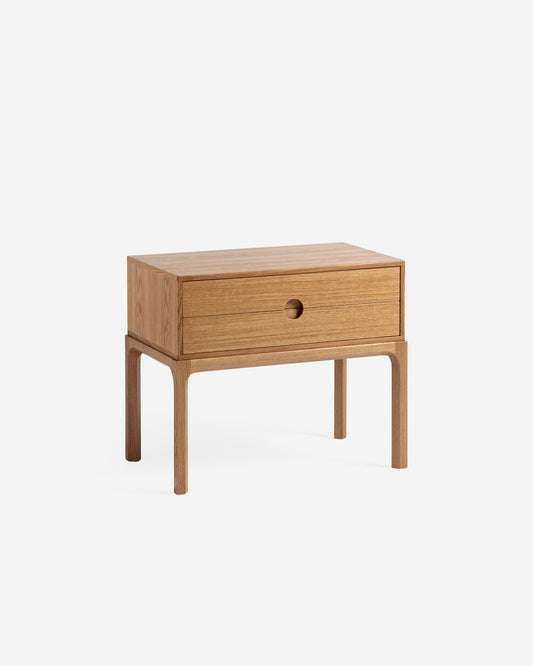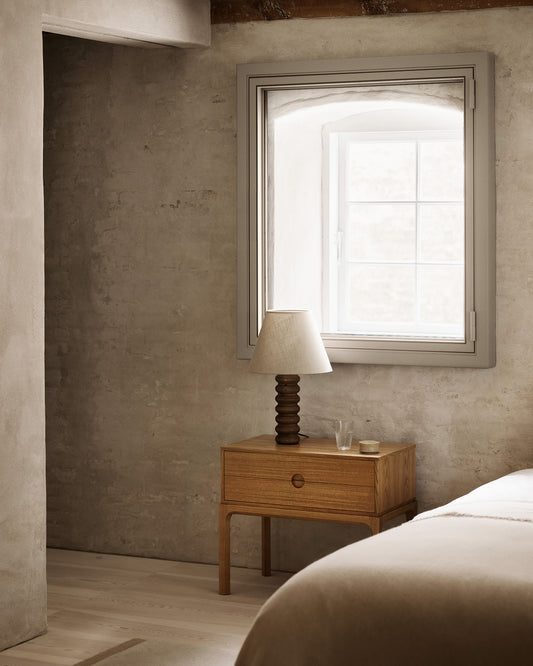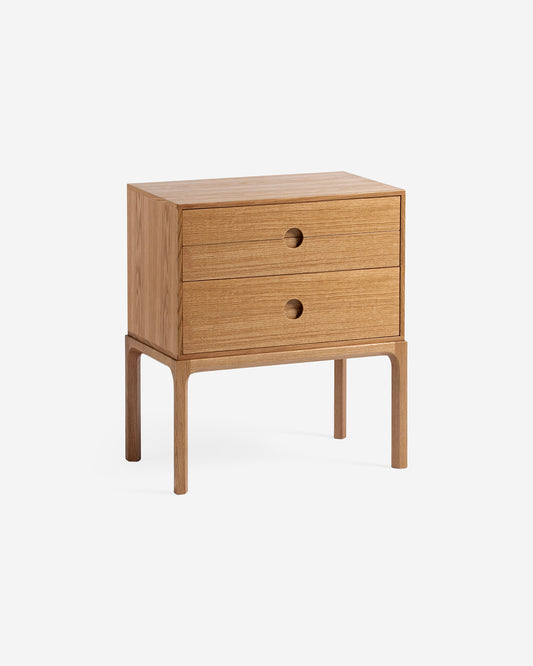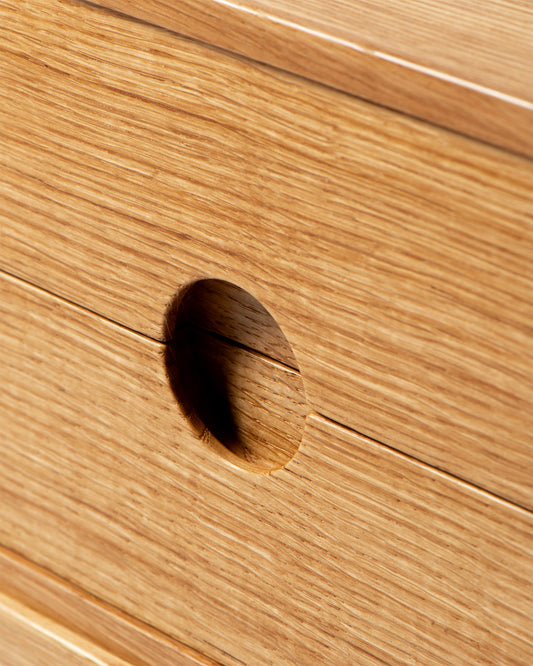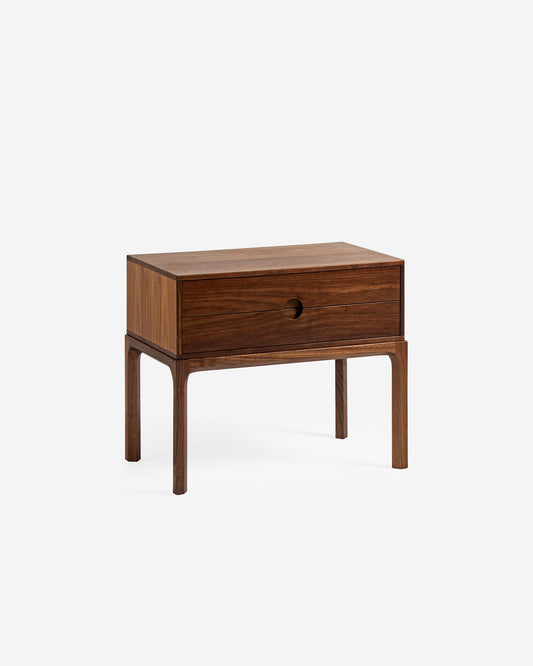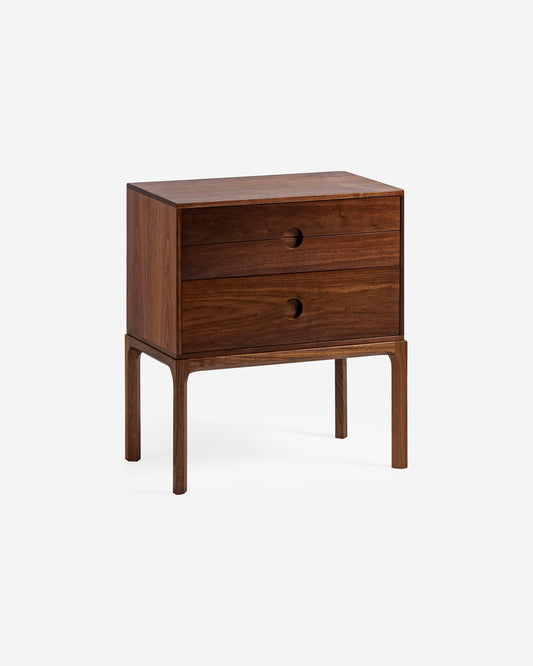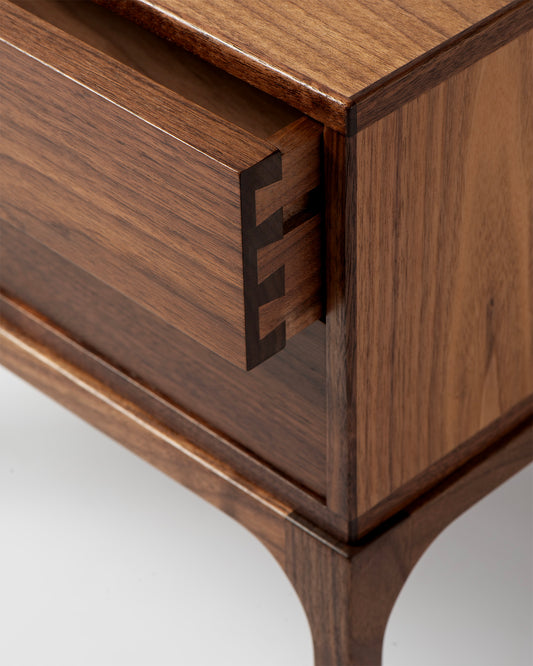Kai Kristiansen is widely regarded as a major figure in the Danish Modern movement and one of its most prolific designers.
Born in Denmark in 1929, Kai Kristiansen emerged during the third wave of Danish Modern designers, alongside the likes of Niels Otto Møller. He helped revolutionise the industry by successfully combining the fundamental principles of Danish design with modern manufacturing technology.

An early portrait of Kai Kristiansen
A Meeting of Minds in Copenhagen
After spending years honing his woodworking skills in his father’s carpentry workshop, Kristiansen enrolled in cabinetmaking and furniture design at the Royal Danish Academy of Fine Arts in Copenhagen in 1950, where he studied under the esteemed architect and furniture designer Kaare Klint. Despite their different backgrounds – Klint from the cultural heart of Copenhagen and Kristiansen from rural northern Denmark – Klint became a key mentor, shaping Kristiansen’s sensibilities and influencing his design process.
Kristiansen credits Klint with informing his understanding of “good taste.” Klint’s interpretation of taste as a scientific and logical discipline, rather than a critical and subjective concept, had a profound effect on Kristiansen’s design career.

The Entre Bedside Table (1956) reissued by Dagmar in collaboration with the Kristiansen family. Pictured here in oiled oak.
Family Business
In 1951, Kristiansen returned to his hometown, where his father had acquired a factory specialising in Renaissance furniture. Aware of the growing demand for Danish furniture in post-war Europe and the US, Kristiansen encouraged his father to pursue a shift in style. He designed the Treco table as a new direction for the company, and after producing a further collection of cabinets, his father was able to sell the business, avoiding what could have been a financial disaster. This early success demonstrated Kristiansen’s acute understanding of the industry as well as his entrepreneurial spirit.
The Start Of A Successful Career
By 1954, the newly-married Kristiansen had relocated to Brædstrup in Jutland, near Denmark’s second-largest city, Aarhus, with his wife Edith, to establish his own design practice. As an independent designer, his work was marked by a desire to create furniture that was not only aesthetically pleasing but also functional – a core tenet of the Danish Modern movement.
Drawing on Klint’s teachings on the use of mathematics and ergonomics, Kristiansen developed collections that responded to everyday life, with each piece conceived for both the user and the space it inhabited. A distinctive feature of Kristiansen’s approach was his ability to design entire ranges of furniture, often persuading manufacturers to produce coordinated series rather than single, standalone pieces.
Working with renowned Danish manufacturers such as Magnus Olesen and Schou Andersen, Kristiansen clearly understood the evolving manufacturing landscape and embraced technological advancement – unlike some of his more traditional contemporaries. He had a particular interest in the economy of design, focusing on reducing waste and maximising production efficiencies.
Kristiansen not only designed beautiful furniture, but also improved his employers’ balance sheets by streamlining production processes, incorporating industrial machinery, and even factoring packing and shipping into the design process.
Designing The Iconic Entre Series
In 1956, Kristiansen designed the now-iconic Entre series for Danish manufacturer Aksel Kjersgaard. The collection included tables, bedside cabinets, benches, chests, and a dresser, with modular elements designed to expand the range. This series epitomised Kristiansen’s forward-thinking approach and his ability to think beyond the initial brief.
The Entre series also featured signature detailing that captured Kristiansen’s unique aesthetic: chamfered legs on the benches and cabinets reflected his emphasis on repeatable elements that could be easily reproduced, while half-moon drawer pulls illustrated his commitment to clean lines and functional interaction.

Early drawing plans for the Entre series, featuring the broad range of cabinets, chests, side tables and mirrors.

Early versions of the original Entre series captured at the Kjersgaard Exhibtion in the 1950s.

Detailing on the new reissued Entre Bedside Tables. The half-moon drawer pulls and fine joinery became trademarks of Kai Kristiansen's furniture work.

The Entre Benches and Stools showcase Kristiansen's signature chamfered legs.
Retirement and an Unexpected Return
Between 1957 and 1975, Kristiansen worked with some of the most prominent manufacturers of the time, including IKEA, Fritz Hansen, Jason Møbler, and Chr. Jensen Møbelsnedkeri, to name a few. He designed everyday items such as desks, dining tables, lounge chairs, sofas, and daybeds, as well as more complex shelving systems and smaller-scale pieces like stools and coffee tables – each showcasing his conscientious, practical approach.
Kristiansen retired in 2006, but returned to work in 2008 when Japanese furniture maker Miyazaki Chair Factory invited him to design a new chair and sofa series. He has continued working ever since, collaborating with his three sons to reproduce his earlier designs under the banner Kai Kristiansen & Friends.

Kai Kristiansen at his studio in his home in Brædstrup, Denmark.
The popularity of his work continues to this day. His designs have been exhibited, promoted, and sold at major design fairs across Europe, including in Fredericia, Copenhagen, Paris, London, Milan, and Cologne.
Meanwhile, auction houses and specialist dealers continue to distribute hundreds of original Kristiansen pieces worldwide, alongside works by Danish Modern icons such as Finn Juhl and Hans Wegner. This in itself is a testament to a career defined by innovation, craftsmanship and masterful design.


